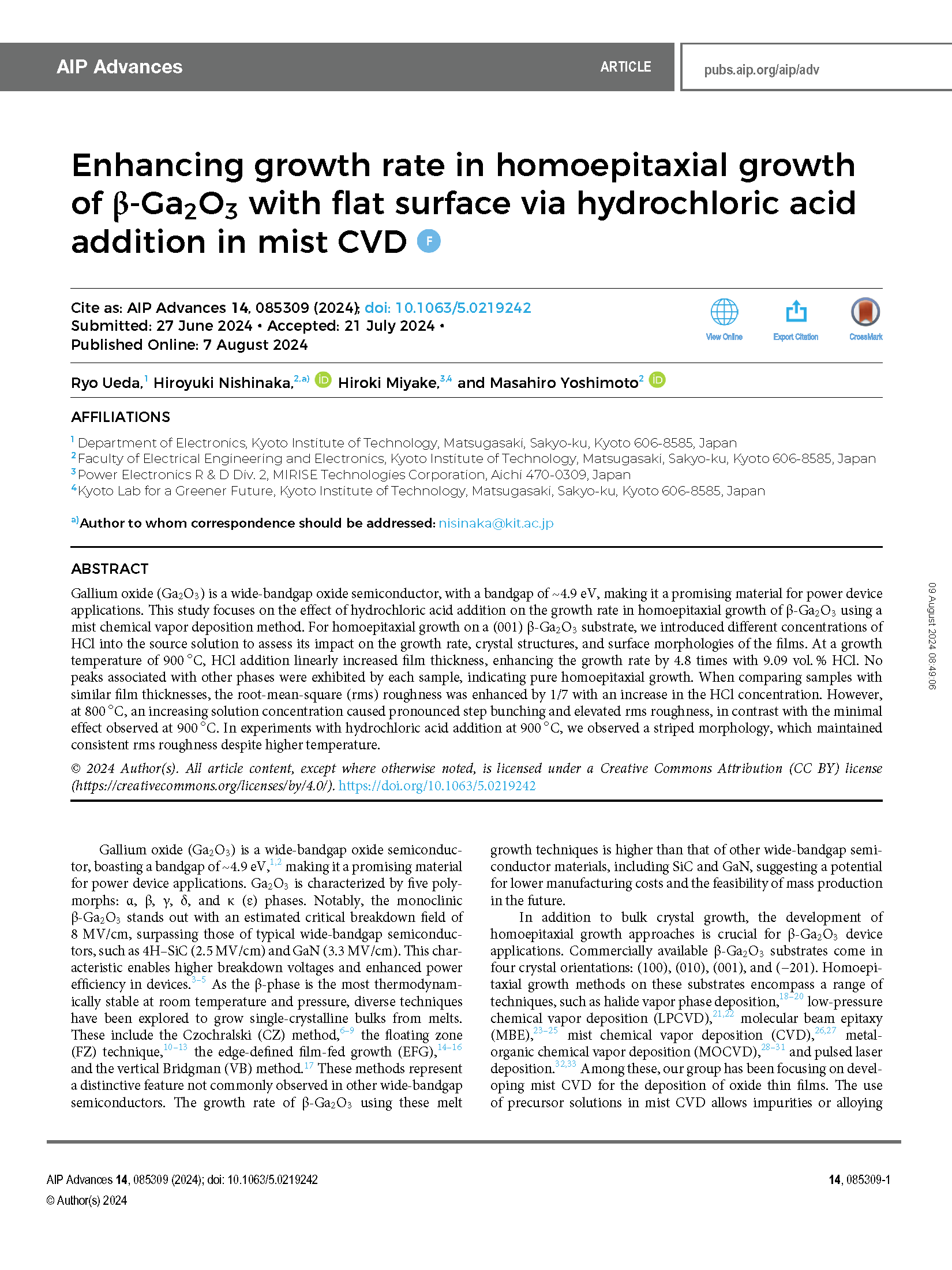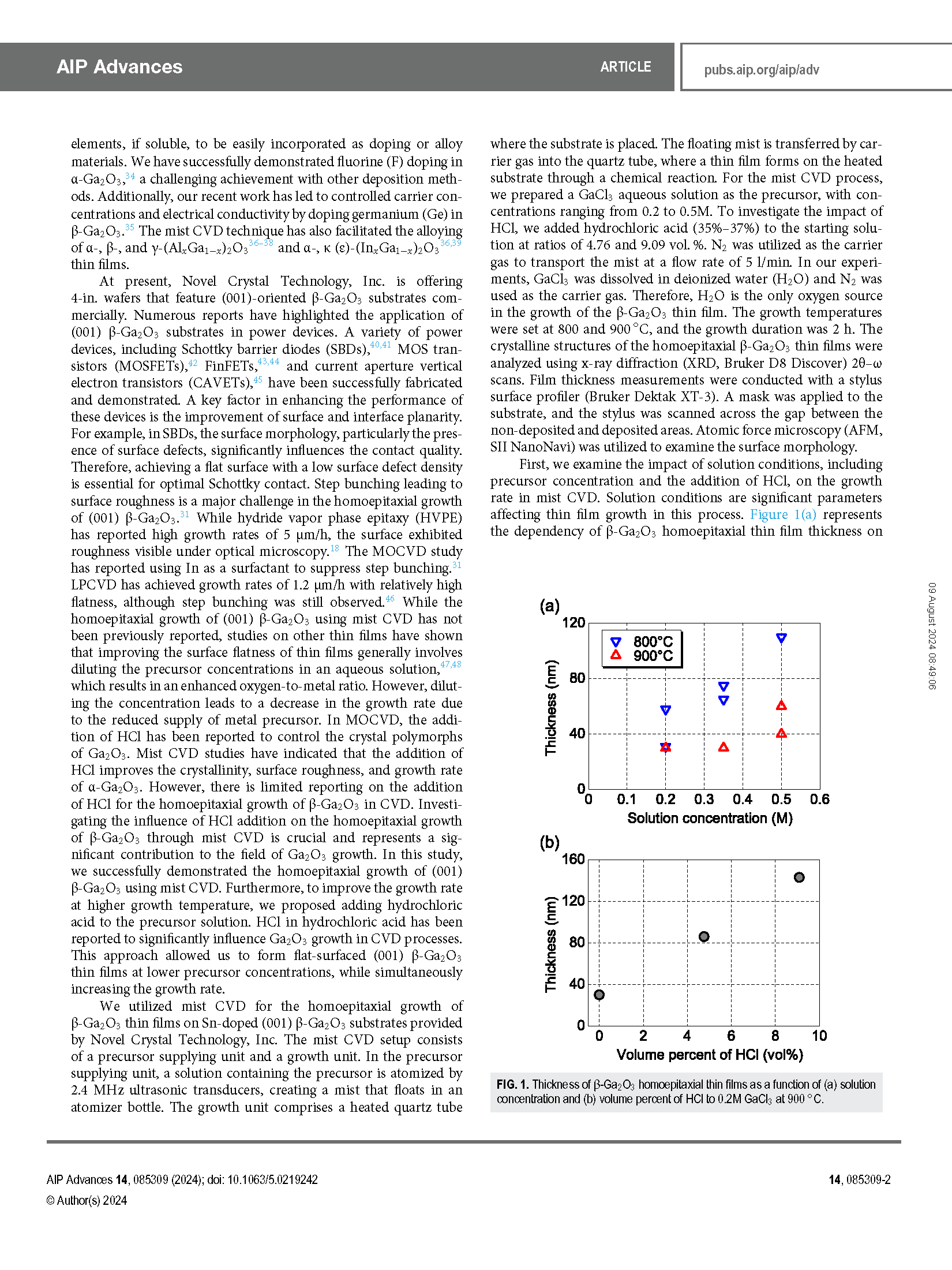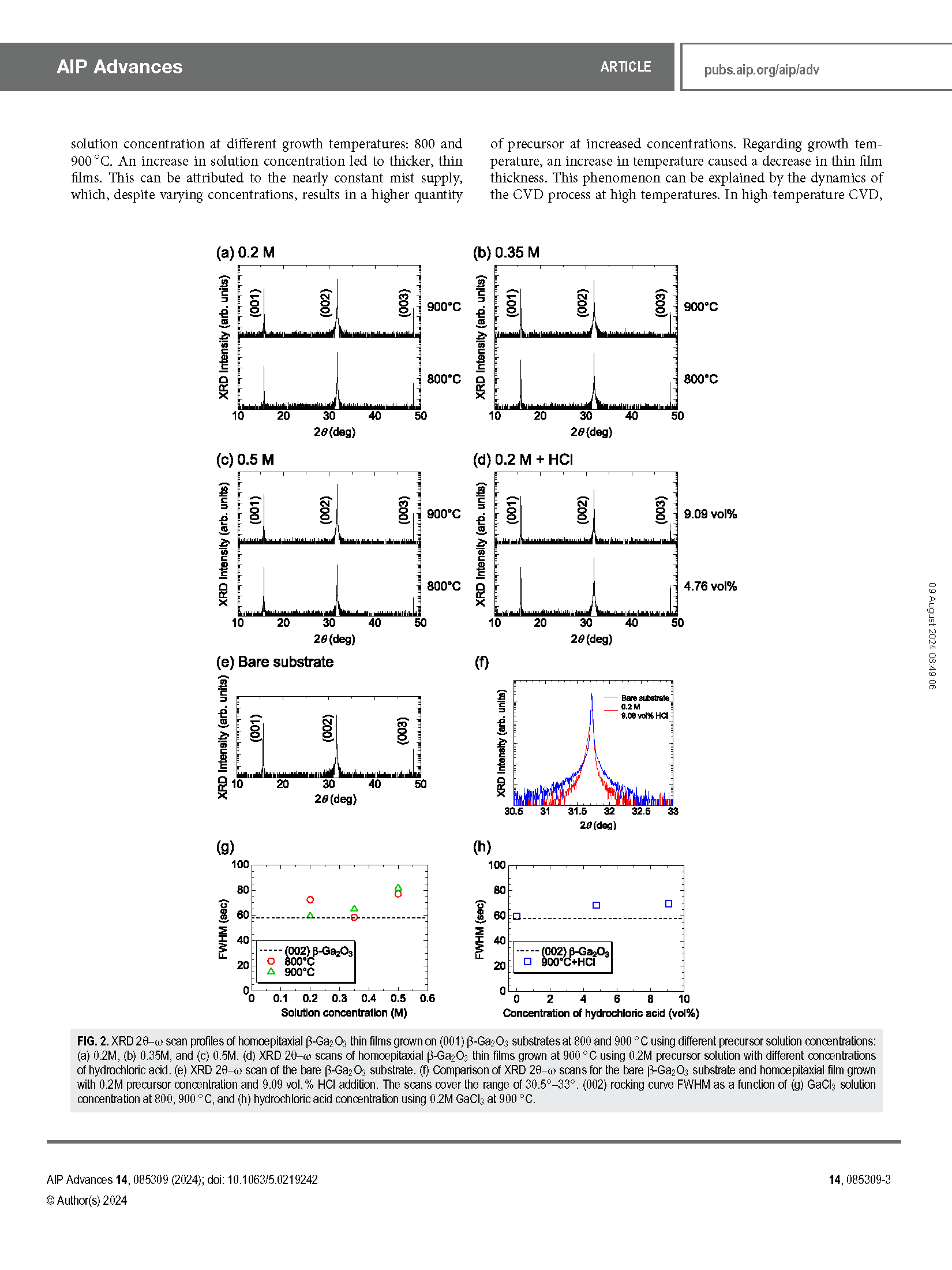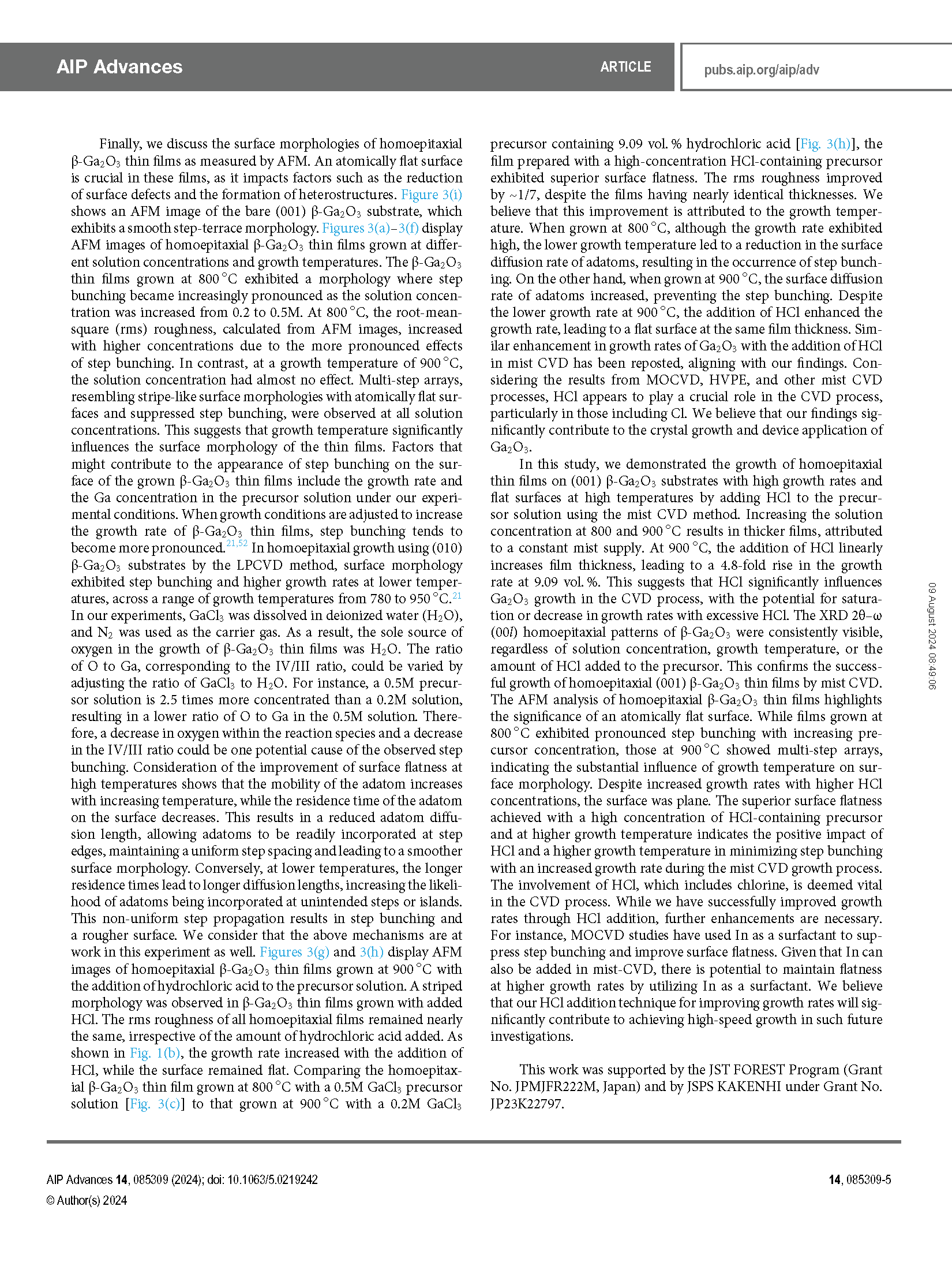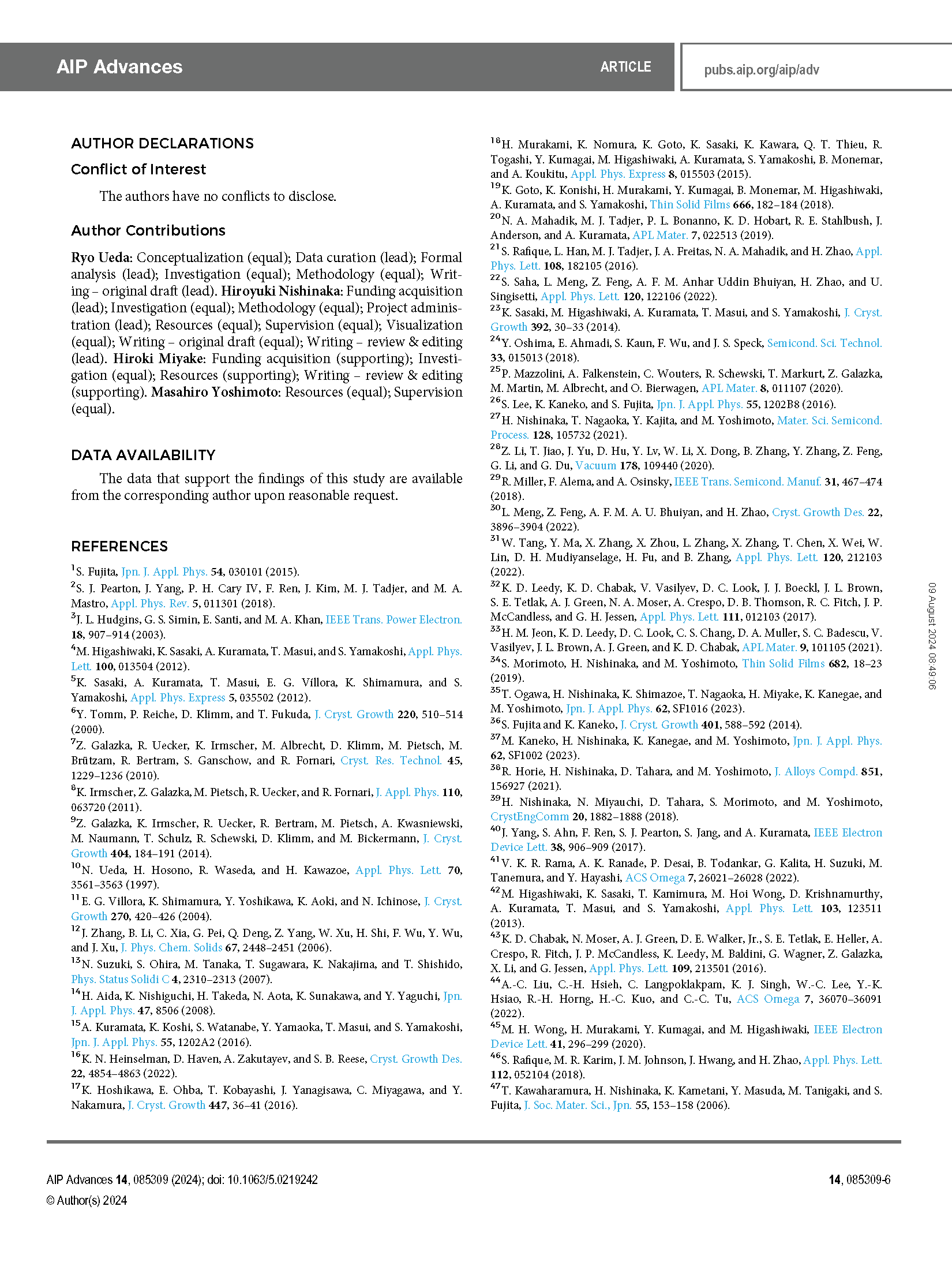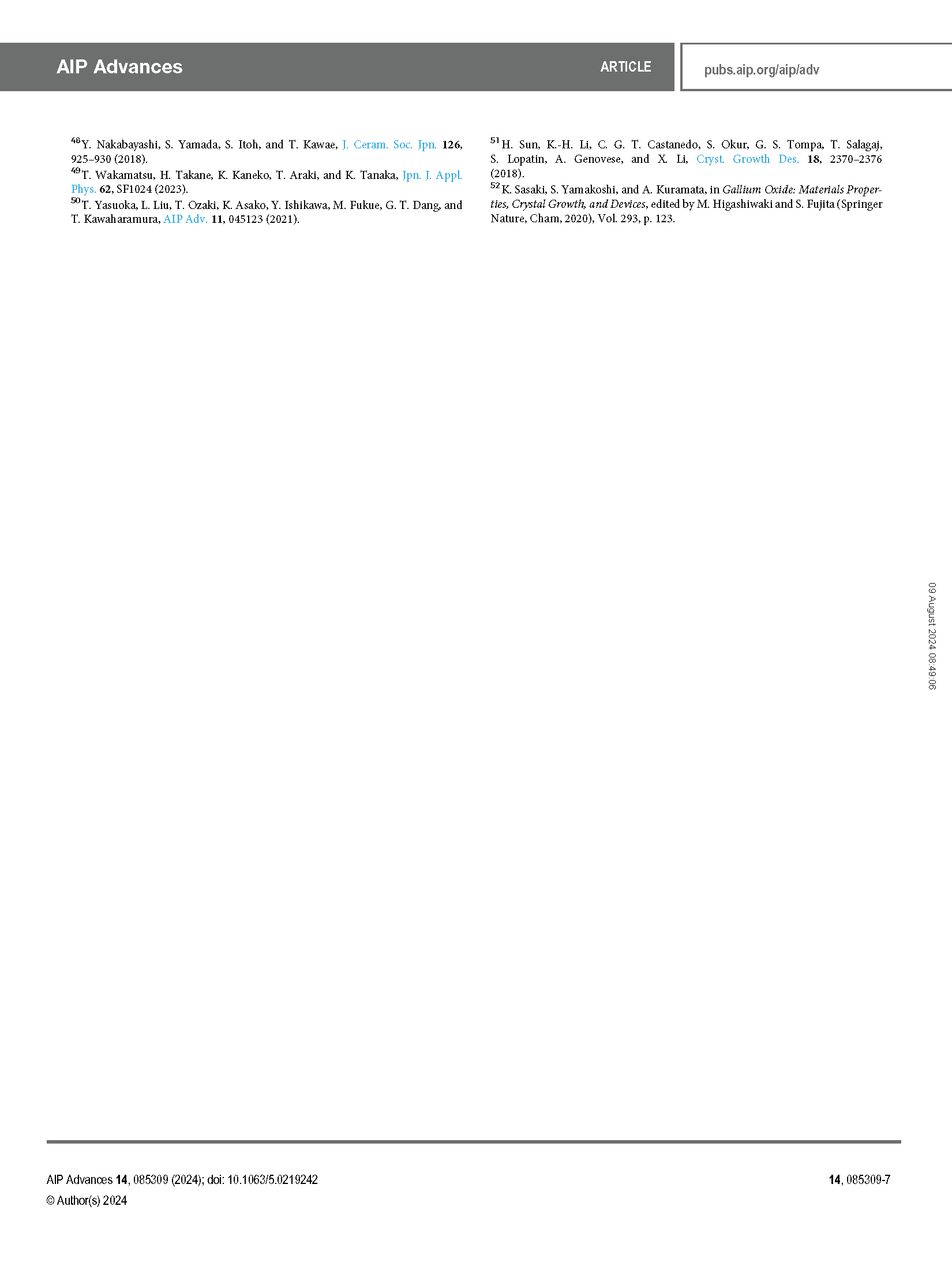
【International Papers】Enhancing growth rate in homoepitaxial growth of β-Ga₂O₃ with flat surface via hydrochloric acid addition in mist CVD
日期:2024-11-08阅读:513
Researchers from the Kyoto Institute of Technology have published a dissertation titled "Enhancing growth rate in homoepitaxial growth of β-Ga2O3 with flat surface via hydrochloric acid addition in mist CVD" in AIP Advances.
Abstract
Gallium oxide (Ga2O3) is a wide-bandgap oxide semiconductor, with a bandgap of ∼4.9 eV, making it a promising material for power device applications. This study focuses on the effect of hydrochloric acid addition on the growth rate in homoepitaxial growth of β-Ga2O3 using a mist chemical vapor deposition method. For homoepitaxial growth on a (001) β-Ga2O3 substrate, we introduced different concentrations of HCl into the source solution to assess its impact on the growth rate, crystal structures, and surface morphologies of the films. At a growth temperature of 900 °C, HCl addition linearly increased film thickness, enhancing the growth rate by 4.8 times with 9.09 vol. % HCl. No peaks associated with other phases were exhibited by each sample, indicating pure homoepitaxial growth. When comparing samples with similar film thicknesses, the root-mean-square (rms) roughness was enhanced by 1/7 with an increase in the HCl concentration. However, at 800 °C, an increasing solution concentration caused pronounced step bunching and elevated rms roughness, in contrast with the minimal effect observed at 900 °C. In experiments with hydrochloric acid addition at 900 °C, we observed a striped morphology, which maintained consistent rms roughness despite higher temperature.
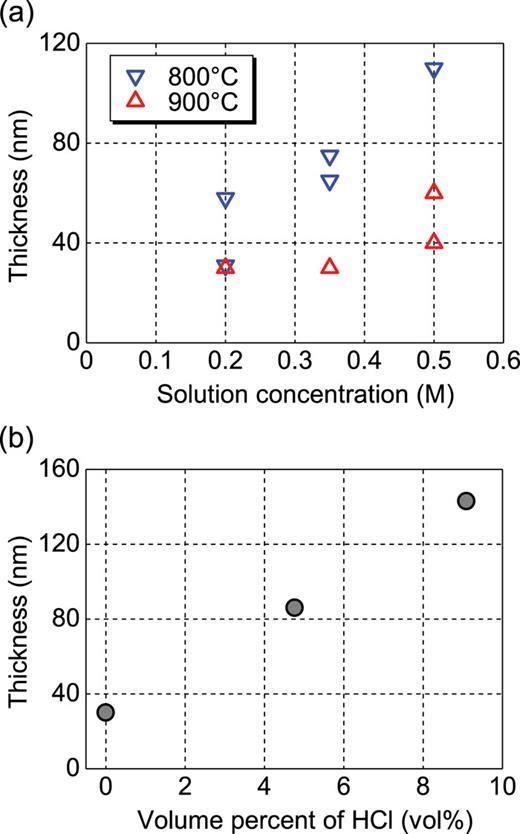
FIG. 1. Thickness of β-Ga2O3 homoepitaxial thin films as a function of (a) solution concentration and (b) volume percent of HCl to 0.2M GaCl3 at 900 °C.

FIG. 2. XRD 2θ–ω scan profiles of homoepitaxial β-Ga2O3 thin films grown on (001) β-Ga2O3 substrates at 800 and 900 °C using different precursor solution concentrations: (a) 0.2M, (b) 0.35M, and (c) 0.5M. (d) XRD 2θ–ω scans of homoepitaxial β-Ga2O3 thin films grown at 900 °C using 0.2M precursor solution with different concentrations of hydrochloric acid. (e) XRD 2θ–ω scan of the bare β-Ga2O3 substrate. (f) Comparison of XRD 2θ–ω scans for the bare β-Ga2O3 substrate and homoepitaxial film grown with 0.2M precursor concentration and 9.09 vol. % HCl addition. The scans cover the range of 30.5°–33°. (002) rocking curve FWHM as a function of (g) GaCl3 solution concentration at 800, 900 °C, and (h) hydrochloric acid concentration using 0.2M GaCl3 at 900 °C.
DOI:
doi.org/10.1063/5.0219242